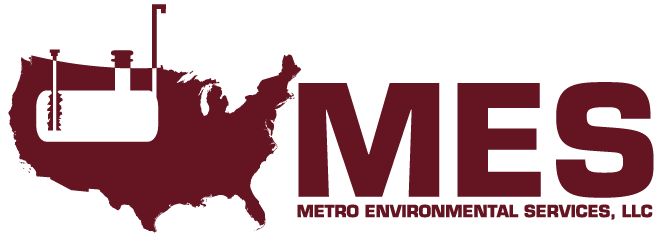Underground Storage Tank Removal & Replacement: When To Do It?
Underground Storage Tank Removal & Replacement: When To Do It?
Removing or replacing an underground storage tank (UST) is never an easy decision, but is sometimes the most appropriate one. How do we figure out when is the right time to replace underground storage tanks?
First, we’ll explore reasons why a gas station owner would have to take on this project. Then, we’ll examine the end-of-life criteria for USTs.
Part 1: Five General Reasons to remove or replace Underground Storage Tanks at a gas station
1. UST Failure
If a storage tank leaks, should it be removed? The answer depends on a number of factors, including local regulations, repairability, and type of tank. Consider these questions:
- Can the leak be repaired? Does the state allow repairs to a UST?
- Is it a single-walled (SW) UST? Does the state allow SW USTs to be repaired?
- Is it a double-walled (DW) UST? Is the leaking area located on the primary or secondary wall of the UST? Does the state allow repairs to fix those leaks?
- Can the UST be removed or replaced?
Therefore, if an underground fuel storage tank leaks and you cannot repair it, you must remove it.
2. State Regulations
Some states have laws regulating the age of your underground storage tank, requiring tanks over X years to be removed by Y date. A few examples:
- In Florida, all SW UST had to be replaced by 2010
- In Rhode Island, SW USTs had to be removed and permanently closed before December 22, 2017, or 32 years from the date of installation, whichever is sooner
- In South Carolina, SW USTs must be replaced by 2019 IF within 100 feet of a water supply or surface water
- In California, SW USTs must be replaced by 2026
- In Hawaii, SW USTs must be replaced by July 2028
- In Connecticut, USTs must be replaced 40 years after installation
There is no consensus amongst states on the lifespan of a UST. Gas station owners must comply with the regulations in effect in their state.
Be sure to catch up on your state’s latest petroleum tank regulations! MES serves several regions across the Northeast, including New York, New Jersey, Pennsylvania, Connecticut, Massachusetts, and Rhode Island, and offers compliance services to help business owners avoid violations or hefty fines.
3. Business Interests
Sometimes, internal business decisions force the owner of the UST to remove or replace the tank. Reasons might include:
- To increase the amount of product stored to meet customer demand
- To meet consumer demand for newer products
- Remodeling
- Relocating a store to a more profitable location
In any case, if it increases the profitability of the location, it makes sense to remove or replace its underground fuel storage tank.
4. Compatibility Requirements
Unsurprisingly, EPA regulations require underground storage tanks to be compatible with the product stored within them.
That means if a business decides to store a product not compatible with their underground storage tank, they will have to replace the tank to meet the compatibility requirement.
Do you need help determining if your facility’s underground storage tanks meet your state’s compatibility requirements? Call us today.
5. Financial Responsibility
Some insurers have made the blanket decision to not sell insurance for USTs over 20 years of age & to not renew policies with USTs over 26 years of age.
In addition, while other insurers might not expressly prohibit placing or renewing coverage on older USTs, they’ll often price the insurance so as to not be competitive. For more information, check out this guide to tank insurance.
For that reason, if your UST is too expensive to insure or no insurance company will cover it, the only choice may be to remove or replace it. If you don’t, the site will violate Subpart H of 40 CFR Part 280.
Summary Checklist: When should an underground storage tank (UST) be removed or replaced?
- Does the UST still function as designed?
- Does the UST meet regulations?
- Is the UST profitable?
- Is the UST compatible with the product stored?
- Is the UST insurable?
If all of the answers to these questions are YES, there’s no reason to remove or replace the UST.
Continue reading to learn what industry professionals and lawmakers say about the lifecycle of underground storage tanks.
Part 2: When to remove or replace an underground storage tank?
The online literature concerning underground storage tanks often do not include the variables influencing the lifespan of the UST. These variables include age, volume, product stored, design, materials of construction and more. This makes it difficult to give a definite answer to most UST-related questions, so the answer is usually “it depends.”
This response might as well be the storage tank mantra. Indeed, it’s how most answers related to USTs begin, which can make matters incredibly complicated.
Owner Options for Replacing Underground Storage Tanks
In general, there are two approaches to equipment life cycles: Preemptive (planning ahead for the expected end of the equipment’s functional life cycle) or Reactive (making decisions after the equipment has failed).
What do you think the data says you should do? Remove a storage tank at an arbitrarily chosen age or date, or squeeze every bit out by using the UST until it no longer functions as designed?
Ideally, storage tanks are replaced before they leak, which helps avoid any potential bad publicity, NOV’s or cleanup costs.
A Brief Summary of Underground Storage Tanks in the US
- Before 1988, most USTs were unregulated, and more than 85 percent of USTs were made of unprotected steel.
- In 1988 the EPA set minimum standards for new USTs. It required owners of existing tanks to upgrade, replace or close them. Most of these laws didn’t take effect until 1998.
- In July of 2015, the EPA revised the 1988 federal regulations and required all new UST systems installed after April of 2016 to use secondarily-contained USTs and piping, as well as continuous interstitial monitoring for release detection. All owners needed to prove their UST was compatible with regulated substances containing greater than 10 percent ethanol or greater than 20 percent biodiesel.
- Generally, double-walled USTs made since 1995 are compatible with most ethanol-blended and biodiesel fuels.
- As of September 2019, there were 546,192 active USTs at about 197,000 facilities in the US.
Risk Assessment Tools for an Underground Storage Tank:
The Cherokee Nation and Region 6 EPA created the Cumulative Risk for Underground Storage USTs (CRUST) Tool, now used in New Mexico as the GoNM tool. This software evaluated the risk of a release from UST systems by gradient UST system equipment and analyzing ESRI GIS data sets.
Naturally, the equipment criteria included manufacturer, age, materials of construction, design (Double Wall vs. Single Wall), the volume of USTs, number of dispensers, compliance history and more.
Under the age category, equipment over 30 years old received the highest risk grade. However, a site with USTs over 30 years old might still be considered “Low Risk” after the risk criteria are fully calculated.
The Industry Professionals Answer: “What’s the Lifespan of an Underground Storage Tank?”
From the Association of State and Territorial Solid Waste Management Officials (ASTSWMO) on the aging UST universe:
In October 2015, the ASTSWMO USTs Subcommittee released a report titled, “An Analysis of UST System Infrastructure in Select States.” The conclusion was not definitive.
The average age of in-use USTs has not been calculated by most States, making it impossible to discern trends over time. While the age of a UST does not appear to be a major concern in most states, a few have implemented policy decisions to compel the removal of USTs after they reach a certain age.
Nevertheless, Appendix D from the ASTSWMO report provides some interesting quotes. “Arbitrary age limits are a bad idea. We have not seen an age [at which] USTs are likely to fail…Data indicates fiberglass USTs should last over 100 years…Steel USTs may have a similar lifespan, although anodes need to be replaced periodically…USTs [should be replaced] not because of their age, but because of the fuels to which they are exposed. If fiberglass USTs [contain] diesel there is no need to replace them. If they are going to see 15% or greater alcohol, they should be removed or replaced…”
Underground Storage Tank Warranties
Interestingly, some state regulators and individuals in the industry have implied that a oil storage tanks are no longer useful after their warranty has expired.
Yet fiberglass USTs are warranted for 30 years and steel USTs are warranted for 10.
Would you say that steel tanks are only good for 10 years? Is an expired warranty a finite declaration that the equipment won’t function after that? Is a car warrantied for 150,000 miles junk after reaching that milestone?
The Petroleum Equipment Institute:
On September 19, 2018, in the PEI Tulsa letter, the Petroleum Equipment Institute suggested working together to determine the life cycle of a UST system. By compiling data on underground storage tank systems, it should become easier to evaluate the risks associated with older USTs & encourage strategies for reducing those risks.
Collaboration, data input and feedback was contributed from a number of organizations, including the EPA, tribal and state regulators, ASTSWMO and NWGLDE workgroups, online UST compliance groups, Petroleum Equipment Institute members, petroleum service technicians, technicians in the petroleum Industry, owners/operators of UST systems, NEIWPCC, NFPA, API, Underwriters Laboratories (UL) and other related industries. All together, this data might reveal the true life cycle of an underground storage tank.
In any case, a realistic idea about the life cycle of a UST requires standardized data collected from all USTs and reported in a universal format. Still, without the data to assess the trends, very little can be reliably concluded.
Underground Storage Tank Failure Rate
A 2013 report from the Fiberglass UST & Pipe Institute titled “Fiberglass Underground Storage UST Success in the USA” studied 19,240 SW fiberglass USTs.
With an average age of 8 years, only 4 had failures. Three of those failures were attributed to poor installation practices.
Underground Storage Tanks since 2016
By federal law, each new UST system installed since April 11, 2016 must have secondary containment, including double-walled USTs and piping.
Looking 10-30 years in the future at these new oil tank storage systems, will an owner be required to remove a storage tank because it’s out of warranty, even with continuous leak detection, annual testing and maintenance? Time will tell.
Conclusion:
So when should an underground storage tank (UST) be removed or replaced?
The irony is that most recorded releases from a UST system did not originate from the UST. After examining how long a UST will last and work as designed, it’s clear the majority of releases will not come from a storage tank.
ASTSWMO reports “The few published studies available on this subject all have concluded that components other than the UST itself – i.e., piping, joints, connectors, gaskets, dispensers, etc. – are the source of most leaks.”
As previously noted, there are 5 general reasons a UST must be removed or replaced. But can an owner of a UST plan for when they must remove or replace it?
Until we have more reliable data and are able to apply valid scientific analysis, the only concrete answer is that previous list of reasons.
This may not be a very satisfying answer. Largent’s personal opinion for different scenarios is below.
Recommendations for Underground Storage Tank scenarios:
- If a UST was installed before 1988 and it is a single-walled UST, it should be replaced.
- If a UST was installed between 1988 and April 11, 2016. is double-walled with continuous interstitial monitoring, compatible with the product stored, and the equipment is inspected and maintained annually? You likely don’t need to worry about the UST until it fails a release detection test.
- If a UST was installed after April 11, 2016, it will likely last more than 50 years. The UST has to be compatible with the product stored, double-walled with continuous interstitial monitoring, and equipment inspected & maintained annually. Until it fails a release detection test, you probably don’t need to worry. However, new fuel additives (e.g. lead, MTBE, ethanol, etc.) may cause degradation of the materials new USTs are made from.
For any other underground storage tank system, it depends on the variables! These include who made it, what is it made out of, what is the release detection method, how has the compliance history been with the site, etc.
This is a condensed version of a two-part series on the life cycle of an Underground Storage Tank (UST) by Robert Largent, CHMM, an environmental engineer at AAFES (The Exchange). Read his original articles: Part One and Part Two.
Join the UST Compliance group or visit Robert Largent’s Youtube page for more on 40 CFR 280, UST compliance and gas stations.
Disclaimer: this information does not, and is not intended to, constitute legal advice; instead, all information available is for general informational purposes only.
Underground Storage Tank Services Available Near You
Metro Environmental Services (MES) provides full-service construction and environmental solutions for customers that store, consume, or sell petroleum products. Contact us today to learn more about our UST services, which include construction, installation, removal, compliance, tank and line testing, maintenance, and more.
MES serves several regions across the Northeast, including New York, New Jersey, Pennsylvania, Connecticut, Massachusetts, and Rhode Island.





